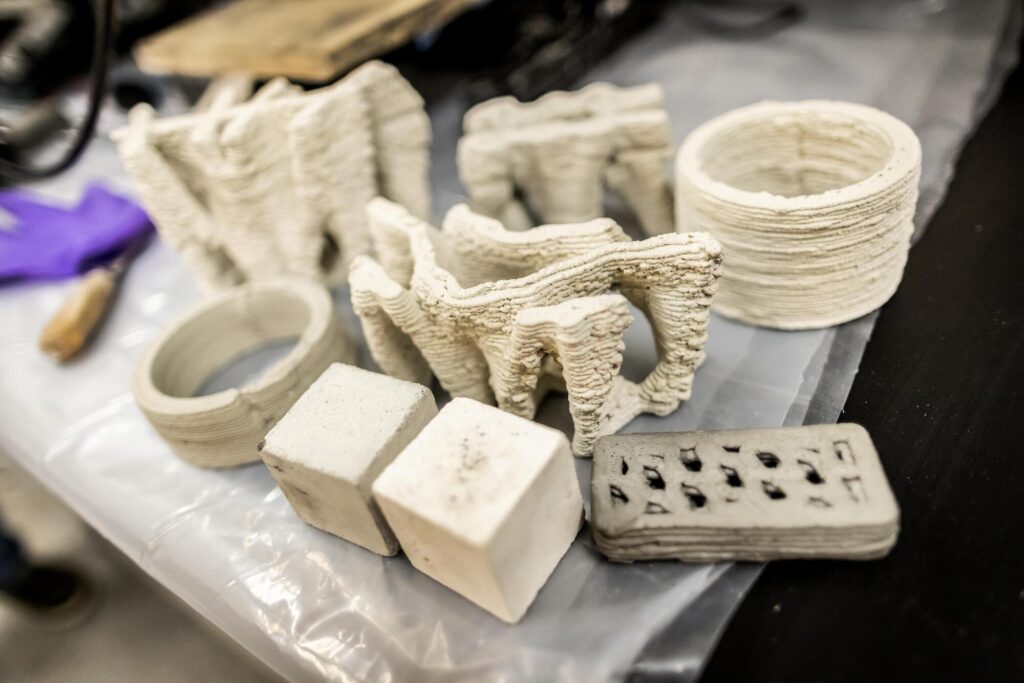
From the mud, straw, and gypsum mixtures of ancient Egypt’s monumental pyramids to the sophisticated underwater material employed by Roman engineers in iconic structures like the Pantheon, concrete has long symbolized civilization’s resilience and ingenuity.
Yet today, concrete finds itself in a paradoxical bind: The very material that allowed societies to flourish is also responsible for up to 9% of global greenhouse gas emissions. Climate change, itself deeply rooted in fossil fuel use, presents humanity with an existential challenge if people seek to sustainably build the structures that support modern life—namely, new homes, highways, bridges, and more.
Now, designers, materials scientists, and engineers from the University of Pennsylvania have teamed up to create a biomineral-infused concrete by blending 3D printing with the fossil architecture of microscopic algae. This concrete is remarkably lightweight—yet structurally sound—and captures up to 142% more CO₂ than conventional mixes while using less cement and still meeting standard compressive-strength targets.
The key ingredient is diatomaceous earth (DE), a popular filler material made from fossilized microorganisms. The researchers found that the fine, porous, and sponge-like texture of DE not only improves the stability of concrete as it’s pushed through a 3D printer nozzle but also provides abundant sites for trapping carbon dioxide. These findings, which are reported in Advanced Functional Materials, pave the way for building materials that both hold up bridges and skyscrapers and help restore marine ecosystems and capture carbon from the air.
“Usually, if you increase the surface area or porosity, you lose strength,” says co-senior author Shu Yang, the Joseph Bordogna Professor of Engineering and Applied Science and Chair of the Department of Materials Science at the School of Engineering and Applied Science. “But here, it was the opposite; the structure became stronger over time.”
